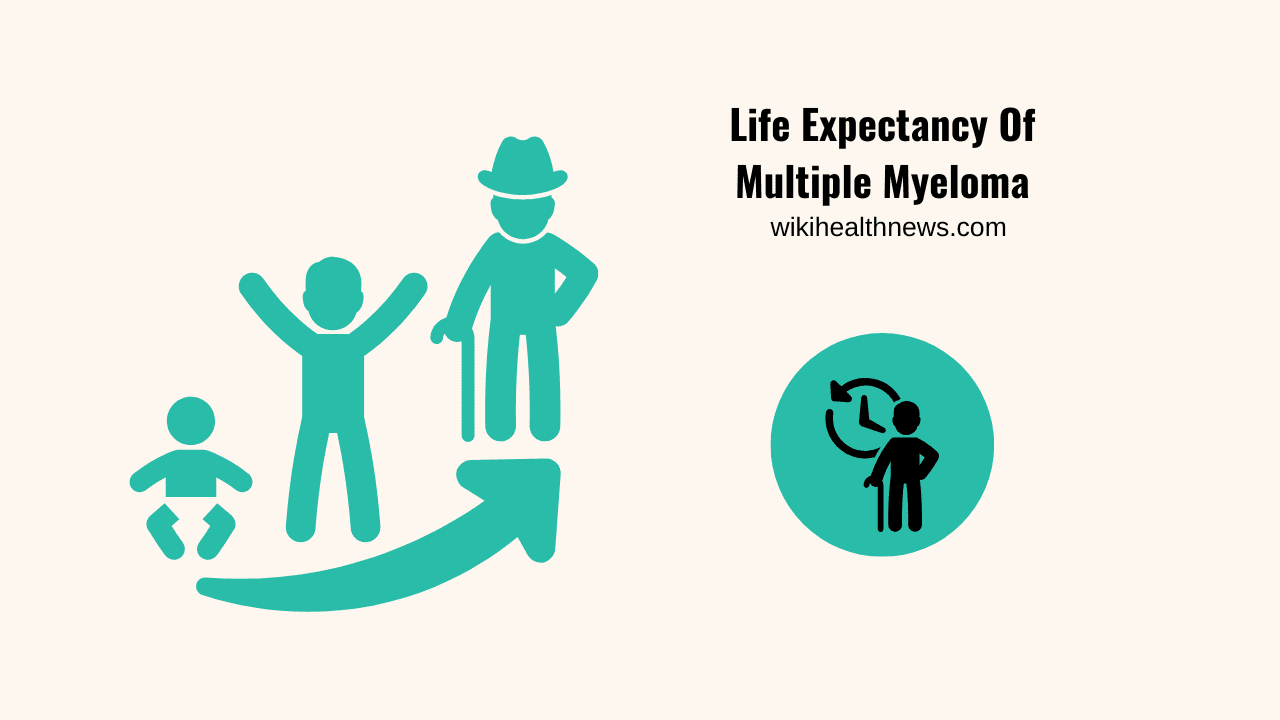What is the Life Expectancy of Multiple Myeloma Patients?

Multiple myeloma is a type of blood cancer that affects plasma cells, which are a crucial component of the immune system. This cancer primarily affects the bone marrow, leading to an overproduction of abnormal plasma cells that disrupt normal blood cell production. Like many cancers, the prognosis and life expectancy of multiple myeloma patients depend on a variety of factors, including the stage of the disease, age, overall health, treatment options, and response to therapy.
In this article, we’ll explore what affects the life expectancy of multiple myeloma patients and provide an overview of current survival rates, treatment advancements, and ways to manage the condition for better outcomes.
What Is Multiple Myeloma?
Multiple myeloma is a type of cancer that begins in the bone marrow, the soft tissue inside your bones that produces blood cells. This disease occurs when the DNA in a plasma cell mutates, causing the cell to multiply uncontrollably. These abnormal plasma cells can crowd out healthy blood cells, weaken bones, and impair kidney function. The exact cause of multiple myeloma remains unclear, but risk factors include age, family history, and exposure to certain chemicals.
How Is Multiple Myeloma Diagnosed?
Diagnosing multiple myeloma typically involves a series of tests, including:
- Blood tests to check for abnormal levels of proteins or signs of kidney damage.
- Bone marrow biopsy to examine the marrow for abnormal plasma cells.
- Imaging tests, such as X-rays, MRIs, or CT scans, to assess bone damage.
An early diagnosis often leads to more favorable outcomes, but multiple myeloma is typically diagnosed at a more advanced stage, given its gradual and often asymptomatic progression.
What Affects the Life Expectancy of Multiple Myeloma Patients?
The life expectancy of a person with multiple myeloma varies significantly based on several key factors:
1. Stage of the Disease
Multiple myeloma is classified into different stages based on the extent of the cancer. The International Staging System (ISS) is commonly used to assess the stage of the disease. The stages range from stage 1 (early stage) to stage 3 (advanced stage). Patients diagnosed at an earlier stage typically have a better prognosis and longer life expectancy.
2. Age and Overall Health
Younger patients and those in better overall health tend to respond better to treatment. Age is an important factor, as the median age at diagnosis for multiple myeloma is around 70 years. Older adults may experience more side effects from treatment and may have other health issues that complicate care.
3. Genetic Factors
Genetic mutations within the cancer cells can affect how aggressive the disease is and how it responds to treatment. Some genetic features, such as deletions in chromosome 17p, are associated with poorer prognosis and shorter survival.
4. Response to Treatment
Multiple myeloma is typically treated with a combination of chemotherapy, stem cell transplants, immunotherapy, and targeted therapies. The patient’s response to these treatments plays a critical role in their survival. Some patients achieve long-lasting remission, while others may relapse after a short period.
5. Comorbidities
Other health conditions, such as diabetes, heart disease, or kidney problems, can influence life expectancy in people with multiple myeloma. Since myeloma can damage the kidneys, the presence of kidney disease can significantly impact survival rates.
Current Survival Rates for Multiple Myeloma Patients
Multiple myeloma survival rates have improved dramatically over the past decade due to advancements in treatment. The average life expectancy for a patient with multiple myeloma today is around 5 to 7 years, though many patients live much longer with appropriate treatment.
The 5-year survival rate for multiple myeloma is currently estimated to be approximately 54%, according to the American Cancer Society. This means that about half of patients diagnosed with multiple myeloma will live for at least 5 years following their diagnosis. However, survival rates vary widely depending on the factors mentioned above, such as disease stage and response to treatment.
For patients with early-stage disease who receive aggressive treatment and stem cell transplants, survival rates can be much higher. Some patients live for 10 years or more, particularly those who respond well to newer therapies like monoclonal antibodies and CAR-T cell therapy.
Factors Contributing to Improved Survival
Several factors have contributed to the increased survival rates of multiple myeloma patients:
- New treatment options: The development of new drug classes, including immunomodulatory drugs (e.g., thalidomide, lenalidomide) and proteasome inhibitors (e.g., bortezomib), has improved outcomes significantly. These drugs are often combined with chemotherapy or other therapies to enhance efficacy.
- Stem cell transplants: High-dose chemotherapy followed by stem cell transplants can help some patients achieve remission for a number of years.
- Targeted therapies and immunotherapy: Treatments like CAR-T cell therapy, monoclonal antibodies, and bispecific T-cell engagers are offering promising results for patients with relapsed or refractory myeloma.
- Better supportive care: Improvements in the management of complications such as bone damage, kidney failure, and anemia have also contributed to better survival outcomes.
Prognosis and Life Expectancy for Multiple Myeloma Patients
While the survival outlook for multiple myeloma patients has improved, the disease remains incurable in most cases. For some, remission can last for years, while for others, the disease may relapse more quickly. The overall prognosis depends on:
- Disease progression: Multiple myeloma is a chronic disease that can often be controlled but not cured. Some patients experience periods of remission, while others face continuous progression despite treatment.
- Access to cutting-edge treatments: Access to the latest therapies, clinical trials, and specialists can significantly improve a patient’s quality of life and survival.
- Personal resilience: Emotional and psychological well-being can play a critical role in a patient’s overall health. Strong support networks and a proactive approach to managing side effects contribute to a more favorable prognosis.
Conclusion
Multiple myeloma is a serious and complex disease with a variable life expectancy depending on various factors such as age, stage, and treatment response. While the overall prognosis remains challenging, significant advancements in treatment have resulted in improved survival rates and a better quality of life for many patients. Early diagnosis, personalized treatment, and participation in clinical trials can further enhance a patient’s chances for longer survival.
Patients and their families should work closely with their healthcare team to explore the best treatment options and support available. Advances in the medical field continue to offer hope, and with proper care, many people with multiple myeloma can live long, fulfilling lives.
Read More











